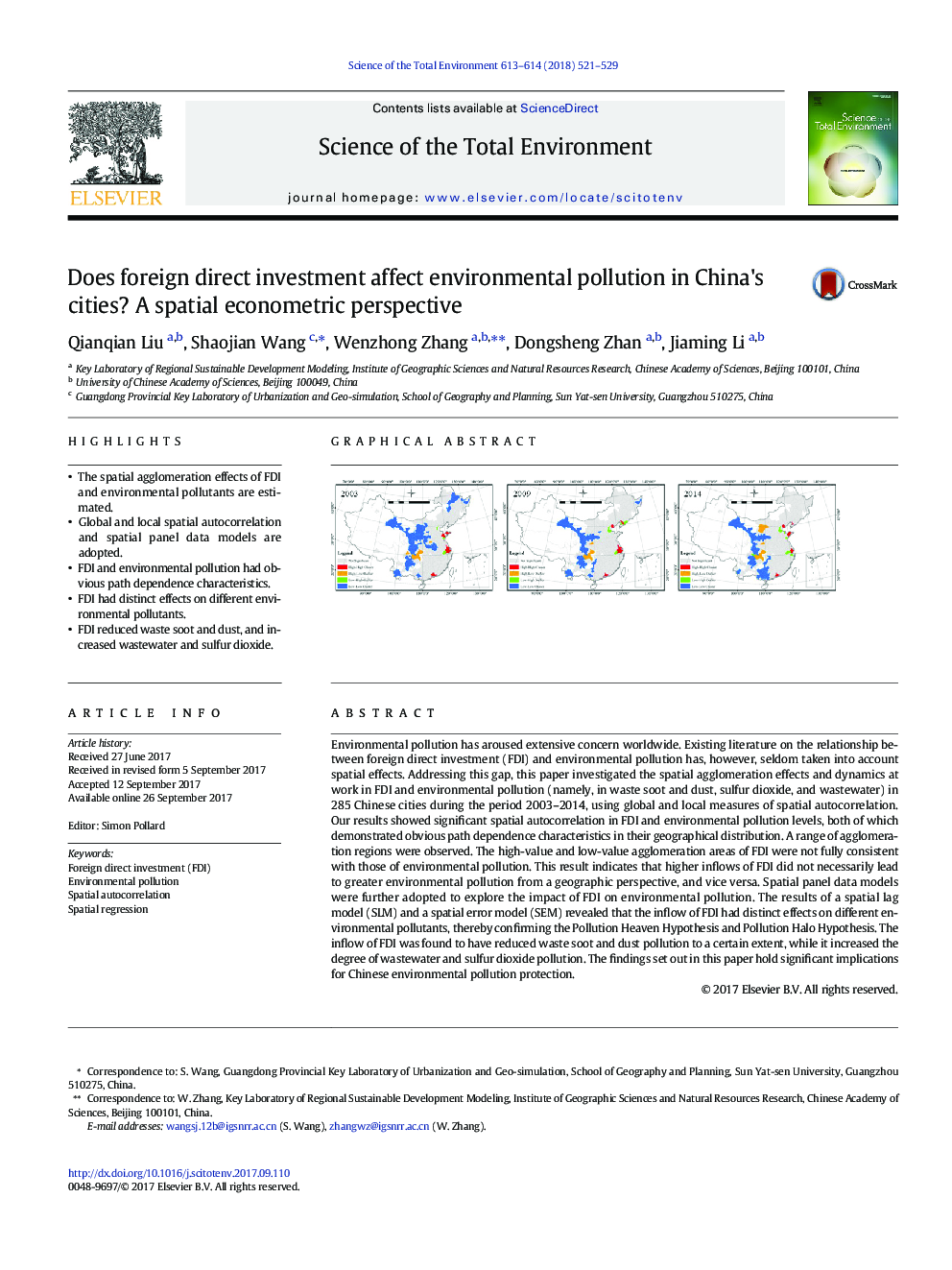| کد مقاله | کد نشریه | سال انتشار | مقاله انگلیسی | نسخه تمام متن |
|---|---|---|---|---|
| 5750115 | 1619690 | 2018 | 9 صفحه PDF | دانلود رایگان |
- The spatial agglomeration effects of FDI and environmental pollutants are estimated.
- Global and local spatial autocorrelation and spatial panel data models are adopted.
- FDI and environmental pollution had obvious path dependence characteristics.
- FDI had distinct effects on different environmental pollutants.
- FDI reduced waste soot and dust, and increased wastewater and sulfur dioxide.
Environmental pollution has aroused extensive concern worldwide. Existing literature on the relationship between foreign direct investment (FDI) and environmental pollution has, however, seldom taken into account spatial effects. Addressing this gap, this paper investigated the spatial agglomeration effects and dynamics at work in FDI and environmental pollution (namely, in waste soot and dust, sulfur dioxide, and wastewater) in 285 Chinese cities during the period 2003-2014, using global and local measures of spatial autocorrelation. Our results showed significant spatial autocorrelation in FDI and environmental pollution levels, both of which demonstrated obvious path dependence characteristics in their geographical distribution. A range of agglomeration regions were observed. The high-value and low-value agglomeration areas of FDI were not fully consistent with those of environmental pollution. This result indicates that higher inflows of FDI did not necessarily lead to greater environmental pollution from a geographic perspective, and vice versa. Spatial panel data models were further adopted to explore the impact of FDI on environmental pollution. The results of a spatial lag model (SLM) and a spatial error model (SEM) revealed that the inflow of FDI had distinct effects on different environmental pollutants, thereby confirming the Pollution Heaven Hypothesis and Pollution Halo Hypothesis. The inflow of FDI was found to have reduced waste soot and dust pollution to a certain extent, while it increased the degree of wastewater and sulfur dioxide pollution. The findings set out in this paper hold significant implications for Chinese environmental pollution protection.
123
Journal: Science of The Total Environment - Volumes 613â614, 1 February 2018, Pages 521-529
